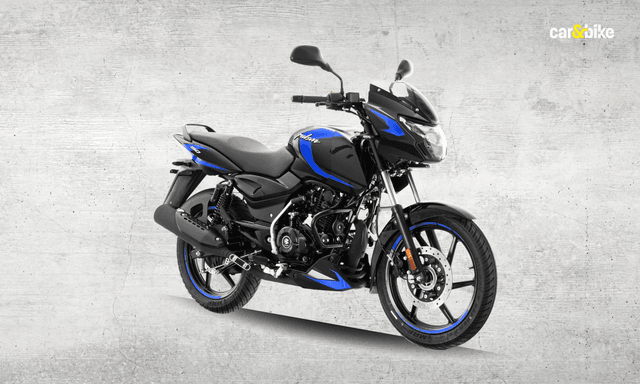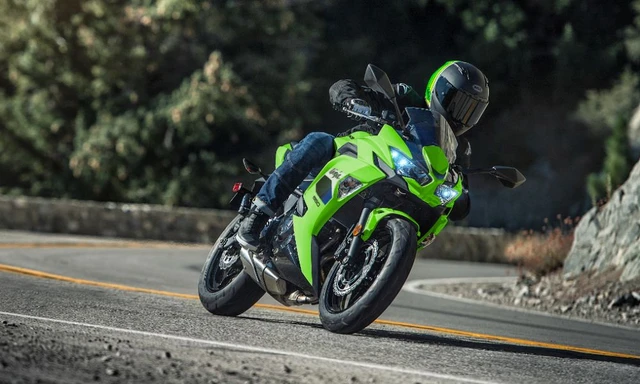Revisiting the Story of How Indias first Electric Car was Created

- India is witnessing a major boom in electric car production of late.
- The first electric car was created at a time when the concept was nascent
- This was named as the Lovebird.
India has always been an evolving car market and this has steadily led to several changes including the launch of new emission regulations, phasing out of older BS-III and BS-IV models, and also the advent of electric cars. While many companies like Mahindra & Mahindra, Tata Motors, and Hyundai have started doing better with their EVs, there was a time when the concept was completely nascent and unheard in India.

Which was India's first electric car?
Reports say that it was the Lovebird, an electric car manufactured back in the year 1993 by the Eddy Electric Series. The car was first displayed at the New Delhi Auto Expo and also got several awards after being launched in the country. The Indian Government readily endorsed the concept and gave it the green light for production. However, the car was discontinued owing to abysmally low sales figures in the country. The company behind the car was none other than Indian brand Eddy Current Controls. This project was done as part of a collaboration with Tokyo-based Japanese company Yuskawa Electric Mfg. Co.
Also Read: These Indian Cities Have The Highest Number Of Electric Charging Stations
The car was manufactured at Chalakudy in Kerala and also in Tamil Nadu's Coimbatore. The two-seater Lovebird made use of a DC (direct current) electric motor and this was fuelled by the portable and rechargeable battery. The battery packs were not highly advanced in those days, meaning that a lead-acid pack was used for the vehicle. The exact cell count and power figures are relatively unknown till date. The Lovebird also has its own electronic chopper system, enabling better speed control. A four-speed gearbox was accompanied with a reverse gear for enabling better efficiency; the car could cover up to 60 kilometres with a single full charge.

Also Read: Are Electric Cars Faster Than ICE Cars? Go Figure.
The car was mainly targeted at urban buyers or those living in smaller cities. The Lovebird needed around eight hours of charging to attain full charge and there were some limitations (15 degrees as the grade limit). This meant that it could not be legally used on inclines owing to safety concerns. The sales figures did not even cross 100 units for this vehicle, leading to it being phased out. Power deficiencies back then were also another factor behind the abysmal adoption of this new technology.
Trending News
 3 mins readWill The Kawasaki W230 Be Launched In India?
3 mins readWill The Kawasaki W230 Be Launched In India?
Latest News
 Jaiveer Mehra | Dec 26, 2025New Mahindra XUV 7XO Teaser Confirms 540 Degree CamerasLatest teaser video confirms the SUV will get the new 540 degree camera set-up from the XEV series as well as a few other features.1 min read
Jaiveer Mehra | Dec 26, 2025New Mahindra XUV 7XO Teaser Confirms 540 Degree CamerasLatest teaser video confirms the SUV will get the new 540 degree camera set-up from the XEV series as well as a few other features.1 min read car&bike Team | Dec 24, 2025Updated Bajaj Pulsar 150 Launched At Rs 1.09 Lakh: Gets LED Lighting, New ColoursThe Pulsar 150 is offered in three variants with prices topping out at Rs 1.15 lakh (ex-showroom).2 mins read
car&bike Team | Dec 24, 2025Updated Bajaj Pulsar 150 Launched At Rs 1.09 Lakh: Gets LED Lighting, New ColoursThe Pulsar 150 is offered in three variants with prices topping out at Rs 1.15 lakh (ex-showroom).2 mins read Janak Sorap | Dec 24, 20252026 Kawasaki Ninja 650 Launched at Rs 7.91 LakhWith E20 compliance, the 2026 Ninja 650 receive a new colour update and a premium price tag.1 min read
Janak Sorap | Dec 24, 20252026 Kawasaki Ninja 650 Launched at Rs 7.91 LakhWith E20 compliance, the 2026 Ninja 650 receive a new colour update and a premium price tag.1 min read Jafar Rizvi | Dec 24, 2025Listed: Car Manufacturers That Will Hike Prices From January 2026Based on the announcements made so far, the price increase across car models is expected to range between 2 and 3 per cent.3 mins read
Jafar Rizvi | Dec 24, 2025Listed: Car Manufacturers That Will Hike Prices From January 2026Based on the announcements made so far, the price increase across car models is expected to range between 2 and 3 per cent.3 mins read car&bike Team | Dec 24, 2025KTM RC 390 Discontinued Globally, Remains On Sale In IndiaThe KTM RC 390 will continue to be offered on sale in India, where it is manufactured and there’s still strong demand for the model.2 mins read
car&bike Team | Dec 24, 2025KTM RC 390 Discontinued Globally, Remains On Sale In IndiaThe KTM RC 390 will continue to be offered on sale in India, where it is manufactured and there’s still strong demand for the model.2 mins read car&bike Team | Dec 23, 2025India Bike Week 2025 In Pictures: Highlights From Edition 12The 12th Edition of IBW was held on December 19 and 20, and if you missed this year’s festival, here is a recap of all that happened.3 mins read
car&bike Team | Dec 23, 2025India Bike Week 2025 In Pictures: Highlights From Edition 12The 12th Edition of IBW was held on December 19 and 20, and if you missed this year’s festival, here is a recap of all that happened.3 mins read
 Jafar Rizvi | Dec 24, 2025MG Windsor EV 38 kWh Long-Term Report: IntroductionThe Windsor EV has joined our garage, and before it settles into daily duty, I took it out to get a sense of what living with an electric car is like.4 mins read
Jafar Rizvi | Dec 24, 2025MG Windsor EV 38 kWh Long-Term Report: IntroductionThe Windsor EV has joined our garage, and before it settles into daily duty, I took it out to get a sense of what living with an electric car is like.4 mins read Seshan Vijayraghvan | Dec 23, 20252026 Kia Seltos Review: Formula Is Spot On, But Is The Timing Right?The 2nd-gen Kia Seltos has arrived, but it has the challenge of facing strong rivals like the Victoris and Sierra. The question is simple - Does it still have what it takes?9 mins read
Seshan Vijayraghvan | Dec 23, 20252026 Kia Seltos Review: Formula Is Spot On, But Is The Timing Right?The 2nd-gen Kia Seltos has arrived, but it has the challenge of facing strong rivals like the Victoris and Sierra. The question is simple - Does it still have what it takes?9 mins read car&bike Team | Dec 26, 2025Tata Punch EV Long-Term Second Report: Highway Performance, Pros & ConsAfter a week of living with the Tata Punch EV Long Range—including a proper Mumbai-Nashik highway test—we've learned what this little electric SUV is really made of.1 min read
car&bike Team | Dec 26, 2025Tata Punch EV Long-Term Second Report: Highway Performance, Pros & ConsAfter a week of living with the Tata Punch EV Long Range—including a proper Mumbai-Nashik highway test—we've learned what this little electric SUV is really made of.1 min read Seshan Vijayraghvan | Dec 22, 20252026 Tata Harrier & Safari 1.5 Hyperion Review: By The Power Of Petrol!The new Tata Harrier and Safari petrol packs a new 1.5-litre TGDI Hyperion engine, but is it an ideal alternative to the diesel version?7 mins read
Seshan Vijayraghvan | Dec 22, 20252026 Tata Harrier & Safari 1.5 Hyperion Review: By The Power Of Petrol!The new Tata Harrier and Safari petrol packs a new 1.5-litre TGDI Hyperion engine, but is it an ideal alternative to the diesel version?7 mins read Bilal Firfiray | Dec 19, 2025Maruti Suzuki e-Vitara Review: Worth The Wait?After a long wait, the first-ever electric Maruti Suzuki is here. It’s the e-Vitara, and it comes with a few promises. But arriving this late, is it worth the wait? Or is it a case of too little, too late?9 mins read
Bilal Firfiray | Dec 19, 2025Maruti Suzuki e-Vitara Review: Worth The Wait?After a long wait, the first-ever electric Maruti Suzuki is here. It’s the e-Vitara, and it comes with a few promises. But arriving this late, is it worth the wait? Or is it a case of too little, too late?9 mins read






























































































































